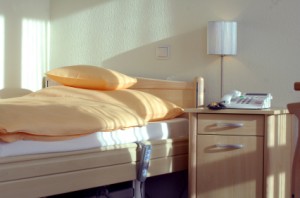Using light to improve sleep, reduce agitation
Here’s my latest article on McKnight’s Long-Term Care News:
Using light to improve sleep, reduce agitation
Poor sleep, reversed sleep/wake cycles, depression and falls are common problems in older adults. In addition, elders with dementia frequently experience late afternoon agitation, or “sundowning.” Because our residents live in a communal environment, a single individual’s agitation or late-night roaming can create a unit-wide problem for staff and other residents.
Research suggests there may be a solution that involves no medication or side effects. The answer could be the use of light.
According to Mariana Figueiro, Ph.D., professor and Light and Health program director at the Lighting Research Center at Rensselaer Polytechnic Institute, the results of the research on light are “very robust.” As she states in the January 2016 American Psychological Association Monitor, “I have no question that if you deliver the right light in Alzheimer’s patients, you improve their behavior; you will improve agitation; they will sleep better.”
Reduced ability to process light
Our bodies receive light via three different types of photoreceptors, the Monitor article explains, and it stimulates the brain in various ways to regulate sleep. As we age, the ability to process this light diminishes. In combination with age-related changes in the circadian rhythms that regulate sleep/wake cycles, reduced production of melatonin which aids slumber, and lifestyle adjustments such as decreased physical activity and exposure to outside light, this contributes to the sleep difficulties of older adults.
Some studies indicate that sleep disturbances have been associated with a buildup of beta-amyloid, a hallmark of Alzheimer’s disease. Researchers speculate that sleep helps to flush toxins such as beta-amyloid out of the brain. By improving the sleep quality of our residents, we therefore may be aiding them in many ways.
Light table
Theorizing that residents with dementia spend a great deal of time sitting around a table, Figueiro created a “light table” using an edge-lit LED television for the surface. This allows staff and residents to interact normally while receiving the appropriate amount of bluish white illumination. Her studies show a significant improvement in the quality of sleep of participants and a significant reduction in depression and agitation. Both of the latter held up fours weeks after the light source was removed.
For the entire article, visit:
Using light to improve sleep, reduce agitation
See video above or click here: http://wnyt.com/article/stories/s3920645.shtml

